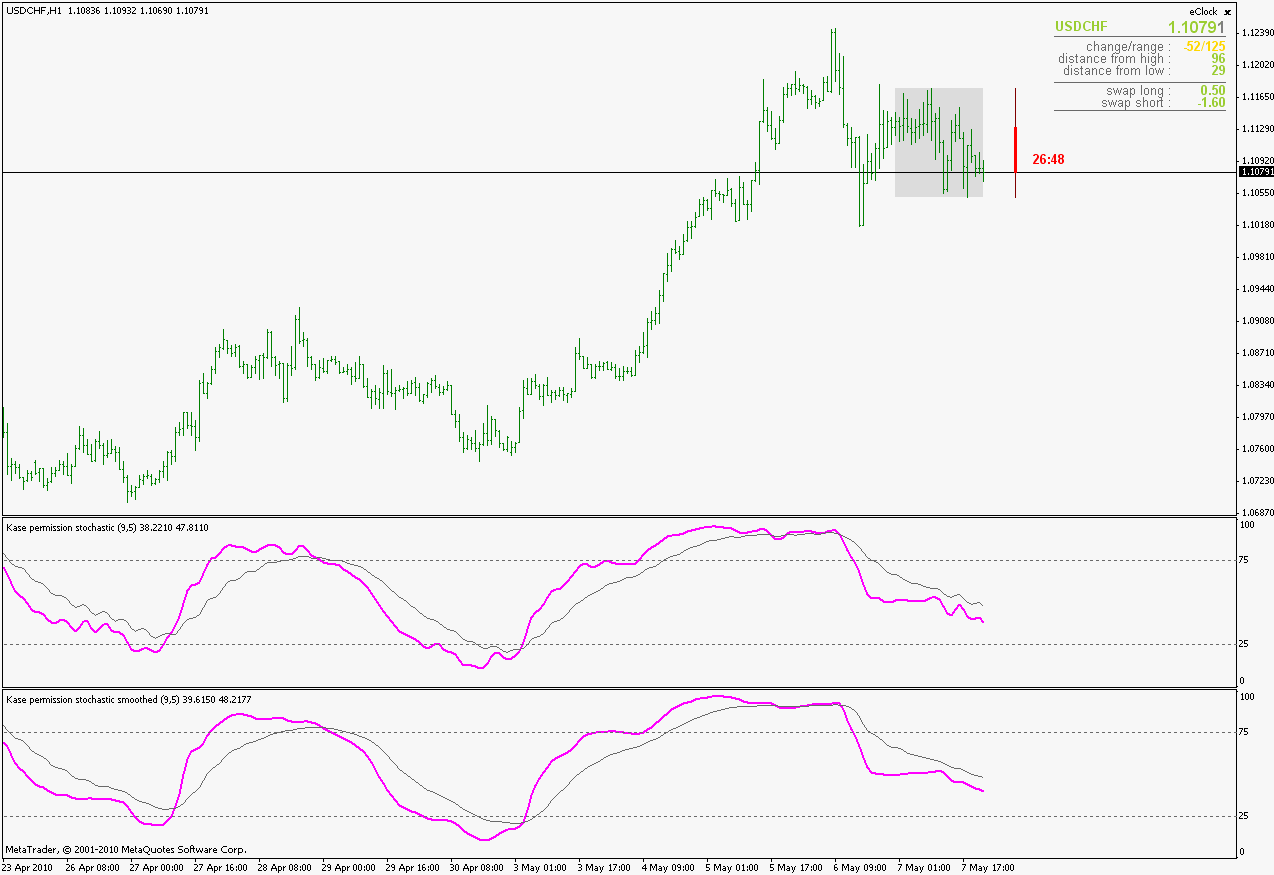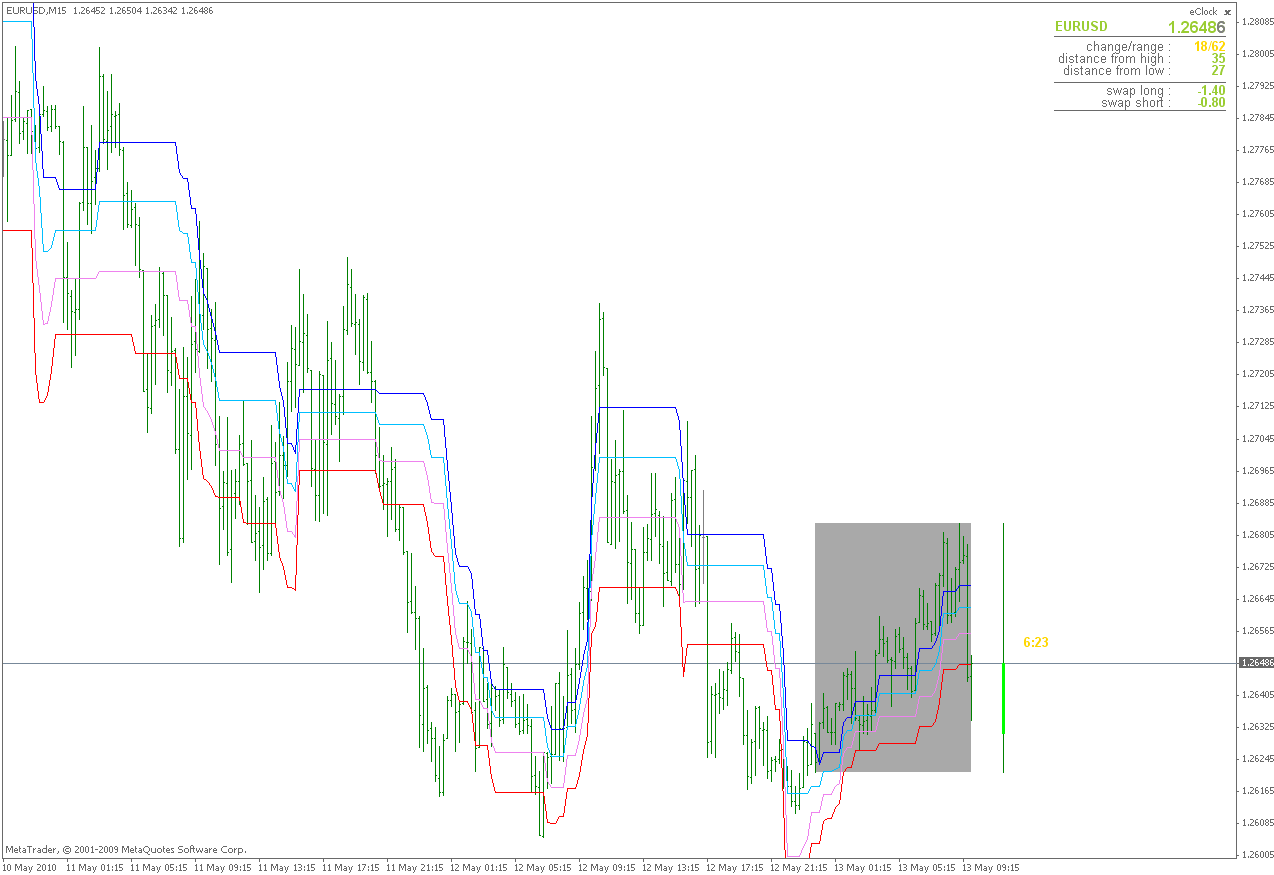Kase CD
Kase CD (where CD means convergence / divergence) In short it is one kind of MACD of basic Kase oscillator values
__________________________________
Parameters :kpoShortCycle-> starting position to calculate valuesYou will notice that in this version there are no deviations line. I decided to keep it as close to original I can, hence no deviations lines in this onekpoLongCycle-> ending position to calculate values
kpoSensitivity-> sensitivity modifier used to calculate values
Kase permission stochastic
This is a rather interesting version of stochastic. It think that there is no need to explain the way signals should be interpreted
__________________________________
Parameters :
pstLength-> stochastic calculation lengthpstX-> displacement in bars used to calculate stochastic
pstSmooth-> smooth coefficient used to EMA smooth the resulting stochastic
Kase permission
This is in fact Kase permission stochastic made as bars instead of lines.
__________________________________
Parameters :pstLength-> stochastic calculation lengthpstX-> displacement in bars used to calculate stochastic
pstSmooth-> smooth coefficient used to EMA smooth the resulting stochastic
:)
There are severeal differences :The biggest difference is where the basic "momentum" comes from. In the "public" one data is taken linearly from current bar to the last bar specified by the period. In this one, the first one is the "shortCycle" bar and the last one is the "longCycle" bar and only that data is used along with average momentum to calculate what is later used for oscillator.The "shortCycle" (or the omission of the first shortCycle values in one part of calculation) is an interesting idea and it seems that for some reasons it makes it more responsive to current price changes (the value of the oscillator itself) As a result it is obvious that the "public" version is showing peaks at places almost wrong compared to this version and it is, in cases of "major" moves, is considerably lagging in zero line crosses
Along with some "tricks" (using logarithm in order to make a sort of normalization) it more or less makes a fair job of standardizing values without the 2.08 and 1.92 mumbo-jumbo constant calculation
Those constants were the one that actually were bugging me. I could not believe that anything fairly serious (and the team around Kase can be called anything but "not serious") can have that kind of voodoo. So this one does not have the voodoo any more
Ahhh,
The infamous Cynthia Kase Indicators.
May I ask, what is the significant differences between the public and private calculation?
Cheers,Qwerky idea, is it possible to code a "Kase DSS Permission" indicator?
...
Walander,
Sorry, only now saw the question (mea culpa, me maxima culpa)
I like the idea  and will try to make it
and will try to make it
regards
mladen
Qwerky idea, is it possible to code a "Kase DSS Permission" indicator?
Great,
Look forward to reading the code.
Cheers,
...
Not a DSS, but a smoother Kase permission stochastic  _________________________
_________________________
 ) Even if these are replacing a simple moving average with SMA period only 2 and the replacements are using period 10, crosses are not lagging compared to the original and we are getting considerably smoother values.
) Even if these are replacing a simple moving average with SMA period only 2 and the replacements are using period 10, crosses are not lagging compared to the original and we are getting considerably smoother values.One more average smoothed compared to the original
Jurik smoothed compared to the original
And the two compared
Hi Mladen,
Is Kase DevStop in Kase StatWare same as the one available in the public forum: https://www.mql5.com/en/forum/173458/page2 ? Thanks.
...
Nah, it is not ...
Here is one that does as describedregards
mladen
Hi Mladen, Is Kase DevStop in Kase StatWare same as the one available in the public forum: https://www.mql5.com/en/forum/173458/page2 ? Thanks.
- Free trading apps
- Over 8,000 signals for copying
- Economic news for exploring financial markets
You agree to website policy and terms of use





These are indicators from Kase StatWare
They have very little in common with the ones posted on the public part of the forum (will post comparison of those too) Wallander will remember the wondering about the 1.92 and 2.08 constants used. Well, these have nothing of a sort.
_____________________________________
First the peak oscillator
Parameters :Difference compared to the "public version" is significant (not just for the "extra lines" but value wise too, see the comparison - upper is this version and lower is the "public version")